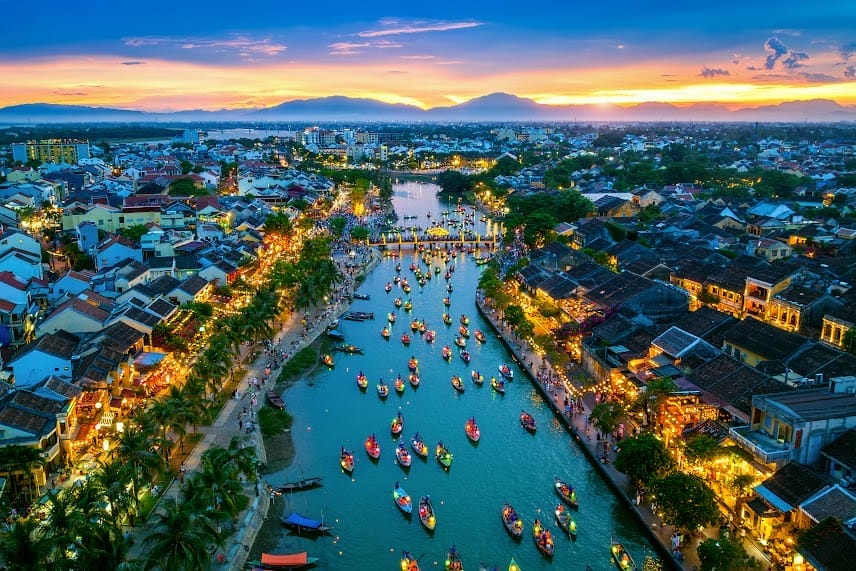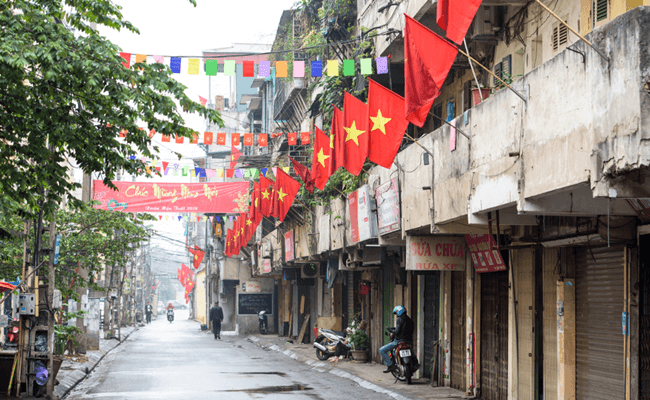The ecological forest of Can Gio is situated 50km away from downtown Ho Chi Minh City. With an area of over 70,000 ha, of which 35,000 ha is salt-watered forest, Can Gio has been recognized as a biosphere reserve of the world by the United Nations Educational, Scientific and Cultural Organization (UNESCO).
Can Gio has been recognized as a biosphere reserve after evaluation of various aspects, including the people, ecology, environment and biosphere sustainability. Those who visited this place decade ago can hardly recognize it today, due to the countless towering trees and plants that stretch out of sight, and the harmonious biosphere of the coastal mangrove forest. So far nearly 40,000 ha of forest and land have been restored. According to the Can Gio Forest Managing Board, at present more than 600 households with 1,500 people reside in this area. They live on reforestation, forest protection and aquatic production. In the early 1970’s, the concept of “Biosphere reserve” was announced with the aim of protecting the species in danger of extinction. The biosphere reserves must preserve the samples of the ecological systems in the world, and work as a laboratory where research and observation of these ecological systems are undertaken. The reserve seeks measures to help the local people benefit from nature.
Before the construction of a 20 km-long road linking Binh Khanh wharf to Can Thanh, which runs along Can Gio to beach April 30, Can Gio was a remote area whose residents lived on catching crabs and mussels. Now it is an interesting eco-tourist site attracting many people from Ho Chi Minh City and other places. The Saigon Tourism Company and Phu Tho Tourism Company have established eco-tours to this area. Visiting Can Gio, you will see crocodiles lying in the swamp and hundreds of monkeys that come from mangrove clumps to the walk-ways of Lam Vien ecological site, to welcome the visitors. They catch sugarcane the visitors give them, and eat them with delight. On holidays, there were averages of 2,000 visitors a day to Can Gio. At peak times there were over 6,000 visitors a day. Visitors could stay at the residential quarter April 30, adjacent to the beach or at Actmang quarter in the 2,100ha Lam Vien area with countless mangrove trees. Quite a few people like to hire hammocks and umbrellas to rest under the canopy of the trees.
In the near future the war zone in the shrub forest, which was home to 800 commando soldiers in wartime, would be restored. It will become a 3,000m² preservation sites with 14 houses-on-stilts, roofed with date palm trunks and water-coconut leaves. When this project is completed, Can Gio will have another traditional tourist site, attracting not only young people, but also those who want to know more about the struggle of the fighters in the shrub forest in the past.
Taking a boat ride on the big Dong Nai and Long Tau Rivers or on the smaller Vam Sac, Dong Thanh and Soai Rap Rivers, which run through Can Gio, visitors will not think that they are visiting a district on the outskirts of Ho Chi Minh City. They seem to be in the watery areas of Ca Mau and Kien Giang, the southernmost area in Vietnam with vast mangrove and cajeput forests. The roots of the mangrove trees on the sides of the river twist with one another then spread out and root deep into the earth. It is these roots that make Can Gio a protective forest safeguarding millions of city dwellers, and an ideal ecological tourist site as well.






